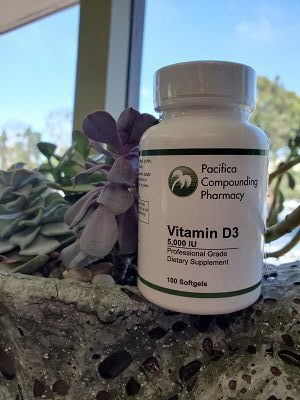
Around this time of the year, most of us are not too concerned about whether or not we are getting enough vitamin D thanks to getting out in the summer sun. But don’t assume that your levels of the often-undervalued “sunshine vitamin” are good enough to keep you healthy. (1)
What is Vitamin D?
Vitamin D is a fat-soluble nutrient that plays a key role in pretty much all our physiological functions. But technically, it is not a ‘vitamin’. It is instead possibly the most powerful steroid hormone in the body and plays a complex role in protecting over 2,000 genes in the human body from expressing negative traits.
In its active form and at optimal levels, vitamin D may be responsible for helping us prevent many of our modern-day diseases. So, if your family has a genetic predisposition for a disease, you may be able to prevent it by optimizing your levels.
Vitamin D3 vs Vitamin D2
Although there are many forms of vitamin D, the two most common types are vitamin D3 and vitamin D2. The most important differences are:
- Vitamin D3 form has the highest absorption (70% more than D2) and is less toxic compared to the more popular vitamin D2.
- Vitamin D3 will stay in your fat cells longer and help you get through the winter when you are usually exposed to less sun.
- Vitamin D3 is primarily derived from the sun but is also found in cod liver oil and some fatty fish so supplementation is something I always suggest.
Interestingly — Vitamin D2 is still used to fortify foods such as milk and orange juice and is the main pharmaceutical form of vitamin D support. The good news is that many pharmaceutical companies are now switching to vitamin D3. (2)
Vitamin D Deficiency
Vitamin D deficiency disease, also known as rickets, was reported as far back as the 1600s as a bone softening disease. Rickets was originally treated with cod liver oil supplementation in the 1800s but it wasn’t until the 1930s that vitamin D deficiency was discovered as the cause.
Researchers have found that those who live in climates where natural sun exposure was the greatest had less chronic disease. In northern climates, studies show a high percentage of Americans are vitamin D deficient, especially during the winter months. (3) (4) (5)
Vitamin D has also been shown to protect against acute respiratory infections, and older adults, the group most deficient in vitamin D, are also the ones most seriously affected by COVID-19. A previous study found that 75% of people in institutions, such as hospitals and care homes, were severely D deficient. (6)
Symptoms of Vitamin D Deficiency
To understand better how important vitamin D really is, imagine this — D deficiency is considered a major factor in at least 17 varieties of cancer as well as:
- heart disease
- stroke
- hypertension/high blood pressure
- autoimmune diseases like multiple sclerosis
- diabetes
- osteoarthritis
- osteoporosis
- muscle weakness & wasting
- birth defects
- periodontal disease
- autism
- and more.
10 Common Vitamin D Deficiency Symptoms
- Getting sick easily or often
- General fatigue
- Chronic pain (often in your bones)
- Depression
- Gut issues
- Wounds that don’t heal
- Bones that break easily
- Hair loss
- Muscle weakness
And you are at a higher risk for vitamin D deficiency if:
- You are older
- You have dark/olive skin
- You are overweight
- You have high muscle mass and low fat
- You don’t eat dairy or meat
- You live in a polluted city
- You have impaired kidneys
How to Optimize Your D Levels
Testing is the only way to know for sure that you are maintaining these levels. It is best to test your levels in the fall when they are the highest and in March when they are the lowest. With those two numbers, you can usually safely calculate your vitamin D supplementation needs.
1) https://www.ncbi.nlm.nih.gov/pmc/articles/PMC3356951/
2) https://www.ncbi.nlm.nih.gov/pmc/articles/PMC4971338/
3) https://www.ncbi.nlm.nih.gov/pmc/articles/PMC3068797/
4) https://www.ncbi.nlm.nih.gov/pmc/articles/PMC6075634/
5) https://www.ncbi.nlm.nih.gov/books/NBK532266/
6) https://www.sciencedaily.com/releases/2020/05/200507131012.htm



